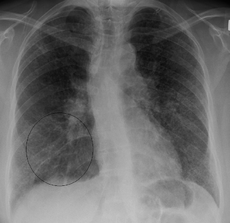
A couple of weeks ago we looked at a study in class about how having lights on while you sleep may cause depression. This topic was very interesting to me because I always fall asleep with my TV on and I always wake up tired the next morning even when I get good nights sleep. So this had me wondering if keeping the lights on or electronic devices running does this really cause depression and why?
A study published in BMC Psychiatry showed a link between a persons natural circadian rhythms with their sleeping cycles and how it affected their bodily functions.
“Delayed circadian phase may cause depression and insomnia; however, this has not been yet established,” he said. “In addition, LAN may alter human melatonin secretion pattern, which is the hormone associated with mental condition and sleep quality.” Encouraging the continuation of research are studies such as one in Molecular Psychiatry in 2013 that pointed out that rates of major depression have increased just as humans have increasingly brightened the night.”
A recent study has been done on mice linking unnatural light and depression. According to the study, “researchers found that mice left in lighted room 24 hours a day exhibited more depressive symptoms than did similar mice that had a normal light-dark cycle.” What scientists found after exposure to light the mice were unable to learn tasks as quickly as without the light exposure. They also showed no interest in sugar or what mice would consider play or fun acts. In addition scientists observed they appeared to move around much less than those that were not exposed to the light. One more interesting observation was that the mice had higher levels of cortisol, the stress hormone.
The study was an experimental study that included 24 male mice. “Half were housed in light for 16 hours a day and darkness for 8 hours, while the other half had 24 hours of light. Half of each group had opaque tubes in their units that let them escape the light when they chose. The other half had similar tubes that were clear and let the light in.”
The study took place over a period of 3 weeks. After the 3-week period, the mice were then set through a variety of tests that would check their level of depression. An example of one of these tests was to see how much sugar water the mice would drink all mice that were forced to live in the light for 24 hours showed more depressive- like symptoms then the mice that were housed in a normal light environment.
Like the first study, the study showed that the reason for the depression was due to lack of melatonin production in the brain.
Another study done at the Ohio State Medical center found the same results. The article says, “All of these light sources disrupt the natural rhythms of nature, as like most other creatures, humans need darkness. When this natural rule is violated, the consequences can be steep.”
In conclusion like the other study in class all of the above study’s showed that exposure to unnatural light at night can cause depression. This does not show any definite causes but there is defiantly a correlation. Keep in mind that this experiment has yet to be done on humans so the results could be different. As a sensible SC200 student though I will start to turn off my lights at night.




























